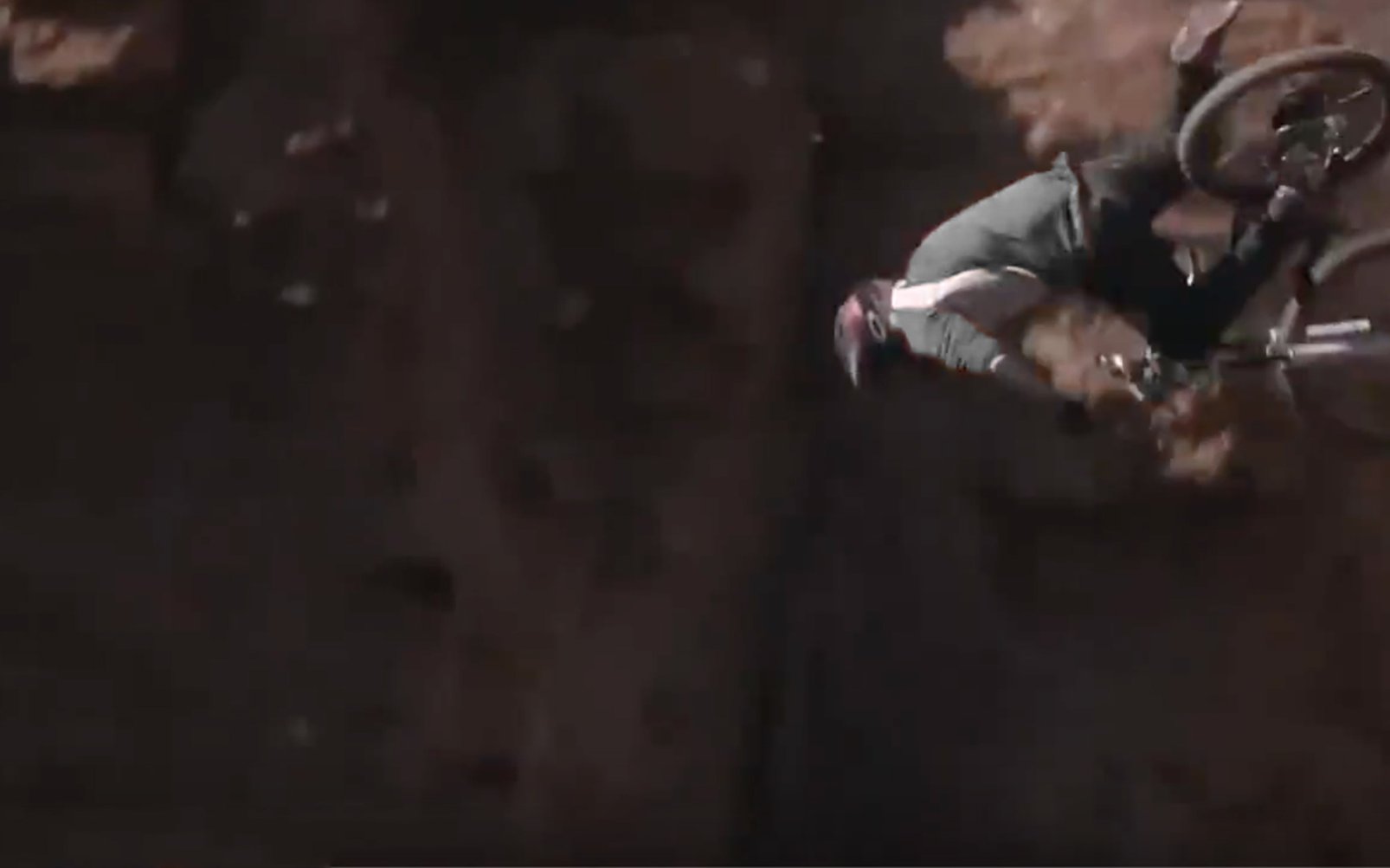
RISK SERIES #2
Pro Riders Talk Injury and Recovery
Our bones and soft tissues can take a lot of abuse, but the uncontrolled combination of speed, gravity, and immovable objects, sometimes compromises our structural integrity.
As a rider, you have almost certainly spent some time on injured reserve. Maybe it was nursing a sprained ankle while your buddies checked out a new trail or sitting in your Whistler hotel room, scratching the scaly skin inside a cast, while your mates ripped A-Line. Being injured isn't pleasant for anyone, but if you ride for a living it's a much bigger deal. FOMO is nothing compared to the fear that your paycheque and way of life may be gone forever. Also known as FTYPAWOLMBGF.
For those who make their living riding mountain bikes, serious injury is virtually a given. Race day injuries are common but at any UCI World Cup DH event there will be racers who bang themselves up enough in practice or qualifying to miss the main event. And EWS riders all seem to crash multiple times over the course of a weekend, ending up either out of contention or crossing the line battered. Those who ride for the camera face similar perils in the video game age. Sending increasingly complex and perilous tricks and combinations off jumps that would scare many moto riders isn't a recipe for health and safety.
Thankfully we can learn from those at the top of the sport. Not only do they have more experience with injury, it's vital they recover quickly, and as completely as possible. They have access to the best medical care, will try virtually anything that may help, and can tell you what works and what doesn't. So I decided to ask a select group about their experience with injury and recovery: Geoff Gulevich, Mark Matthews, Matt Hunter, Miranda Miller, Jesse Melamed and Wade Simmons.
Some of the riders had recent injuries I knew about, but I didn't have to consider whether they would have anything to share. All diehard mountain bikers have endured serious knocks, but pros have several to choose from.
*Wade Simmons miraculously escaped injury in the spectacular Rampage crash that is our cover image.
This is a multi-part series about some of the big and scary parts of our sport. Our Risk series is made possible in part by support from Your Financial Tree, who provide insurance to athletes - professional and amateur - and enable them to take risks with a little more peace of mind. The 1st article, Risk, Calamity and Injury can be found here...
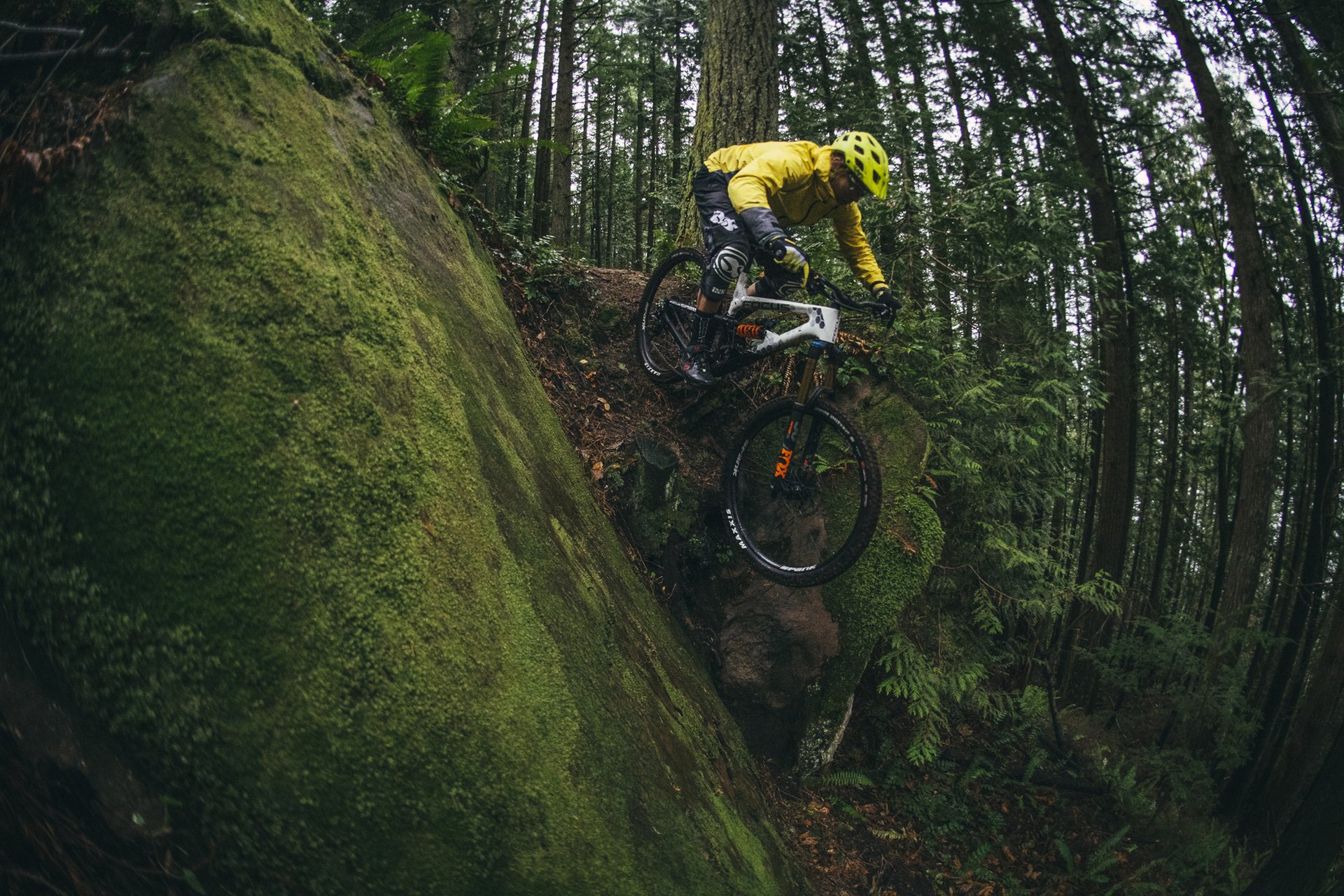
Geoff Gulevich in his natural habitat - riding his new Focus Sam. Photo - Paris Gore
I didn't ask riders for a specific injury, or for all of their injuries, I simply asked about an injury that led to an emergency room visit. Here are the examples they shared.
Geoff Gulevich: "I fell on Canada day, 2005. I crashed doing casual laps with Ross Measures, in Whistler bike park. I felt fine when it happened but when I tried to stand up, my right leg gave out. I had broken my knee cap. I had the Kyle Strait 661 knee pads on and apparently they didn't help. I always wonder how much worse it would have been if I had nothing on at all."
Jesse Melamed: "Which one should I pick...I have unfortunately had 3 hospital-visit crashes in the last year. Let's go with my collarbone. It was the 3rd round of the 2018 EWS in Olargues, France. I was about 3 minutes into the second stage, I was feeling good and pushing it a bit. I hit one corner really well which gave me a bit too much speed for the next corner and I came out of it off balance and just landed right onto my right shoulder. There was an immediate blinding, flash of pain. I knew right away my shoulder was messed up. I called for help and had people coming. I remembered I was close to a road crossing so I walked down with my bike for a minute until I hit the road and I sat down and waited for medical help. I was wearing a back protector but no shoulder protection."
Matt Hunter: "A crash that stands out in my mind was on the Rose Hill road gap. Around 2004. We used to session the road gap during every lap of Rose Hill. My friends and I hit it a lot. There was a transfer to another landing to the left of the classic landing. To hit it, you needed extra speed and a carve left about 5m back of the lip. In those days we didn't prep lines to the current standards.
I went for the transfer, but in the carve on the takeoff there were a bunch of pinecones. (this makes me laugh now that we try to make jumps safe before hitting them) The pinecones rolled under my tires and I basically washed out on the lip. I flew off the lip and landed on the road on my feet. I knew right away that something was wrong with my left knee."
Mark Matthews: "My crash happened at Rampage in 2013, which was the first and only Rampage I took part in. I teamed up with Mitch Chubey to pick a really fun, natural line down the course. We wanted something that stood out from all the big pre-built features that year so we decided to rebuild the speed gap Gee Atherton attempted the previous year. It was gnarly, fast, blind, and very technical as you had to land close to a cliff on your right, and had exposure on your left.
I was the first to guinea pig it between Mitch and I. Coming off the take off, I thought I was too close to the exposed side so I hugged the right of the lip while airing off. This resulted in aiming slightly too far right and hitting the cliff just before I was about to land. It happened so quick my brain couldn't really comprehend what was happening. I don't think I was scared, it was just an instant reaction to a crash and I was in full "fight-or-flight" mode. When my pedal clipped the cliff, my front end dropped immediately and I got sent into a front flip in the air. I opened up my body and rotated slowly, and then landed directly on my right hip. I can't imagine the consequences if that went slightly different. In this scenario, my body armour did nothing. I didn't have a scratch on me. It was a very isolated injury."
Miranda Miller: (Miranda gave me 8 different injuries to choose from - she's had a rough go of it!)
2017 Torn PCL (posterior cruciate ligament) and bruised Tibia Plateau and Femur
Fort William can fuck off. I was feeling awesome and ready for my best result ever in the hell hole of Fort Bill. Remember the bog that people were walking through in their race runs and then people on the internet said that World Cup racers complain and are big babies? Well I made it through there pretty well actually but there was a tricky section after the small wooden gap, before the road gap. It involved landing then getting your front wheel over/above a root without sliding into a wheel-sized hole. Last run before qualifying I slide my front wheel and my knee land directly on a rock. It hurt soooo much, I yelled some extreme profanities and took a couple lord's names in vain. When I was 13 I had torn the head of my tibia plateau off by doing something similar on a crazy carpet so I thought it might be the same. But I stood up and I knew it wasn’t broken by the way it felt but I knew it wasn’t right either. I was wearing what I think is one of the best knee pads for DH, the Fox Launch Pro, with the D30 and hard plastic and I honestly think I would have broken my leg if I had had a softer pad.
Wade Simmons: I suffered my worst MTB crash right off the Mt Fromme road on a canyon gap that Digger had built to film for his North Shore Extreme Movies. It was 2001 and I was there with Dave Watson, Andrew Shandro and possibly a couple other riders. That morning we were taking warm-up runs into the lip and building up our stoke. I was feeling confident that I could do the jump and was the first to attempt it. The lip I remember, was short and quite kicky, we all agreed to scrub off the top a bit to tame it a little.
When I hit it, I knew right away I was in for a crash because I got that bucked feeling where your weight is pushed forward as your rear tire releases off the lip. I landed nose heavy and rode the front wheel into the bank on the left side where my left quad impacted a 1-ft in diameter tree root that was cut and exposed. I stopped dead from the impact and hit the dirt. When I first collected my thoughts on the ground I didn't realize at that point that my leg was broke, but when I went push up from laying on my side it was obvious my knee and hip were not connected. That sucked. I just laid there helpless and yelled "I broke my leg"
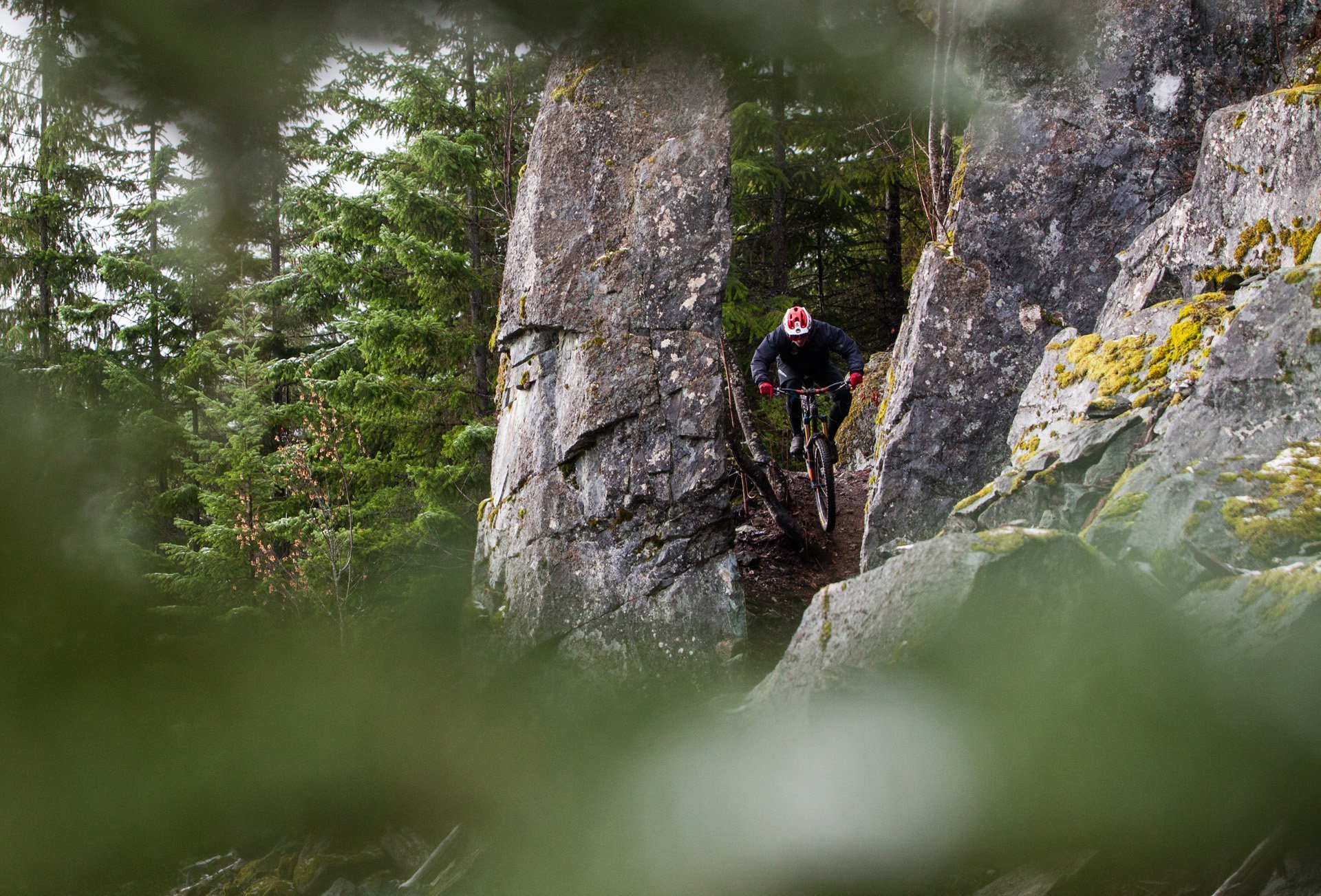
Jesse Melamed tearing up Howler on his home turf. Photo - Ollie Jones,/Hailey Elise
How did you get to the hospital?
Geoff Gulevich: "Of all people to roll upon us was Darcy Wittenburg (Anthill head of cinematography). Ross and Darcy walked me down to the nearest road and was picked up by patrol.They gave me a very painful ride down to the whistler clinic."
Jesse Melamed: "The course medic showed up pretty quick and got to helping me, from there an ambulance came and took me to the hospital."
Mark Matthews: "Shortly after hitting the ground I had a team of paramedics on me. After they confirmed I had no neck or spinal injury, they loaded me onto a stretcher and we slowly crawled out of the Rampage site via ambulance. It probably took almost 2 hours to get to the hospital in St. George. My memory is quite vague since I was very high on morphine at the time."
Matt Hunter: "I rode my bike with one leg dangling, down to my truck. Then a friend drove me there."
Miranda Miller: "Went a week later in Leogang, Austria to a knee specialist and get a MRI. Highly recommend getting knee injuries in Austria, very quick and cheap MRI that travel insurance covered and the doctors work with ski racers a lot."
Wade Simmons: "I luckily crashed right off the 3rd switchback on the Mount Fromme road, so access to me was easy. I was carted off from where I came to rest from my crash on this adapted one-wheeled stretcher designed for difficult patient extraction. I then was loaded into the ambulance and was driven down the dirt road. I remember asking if they could go slower because the pain from my broken femur was horrible, but when I glanced out the window, we were already driving at a snail’s pace."
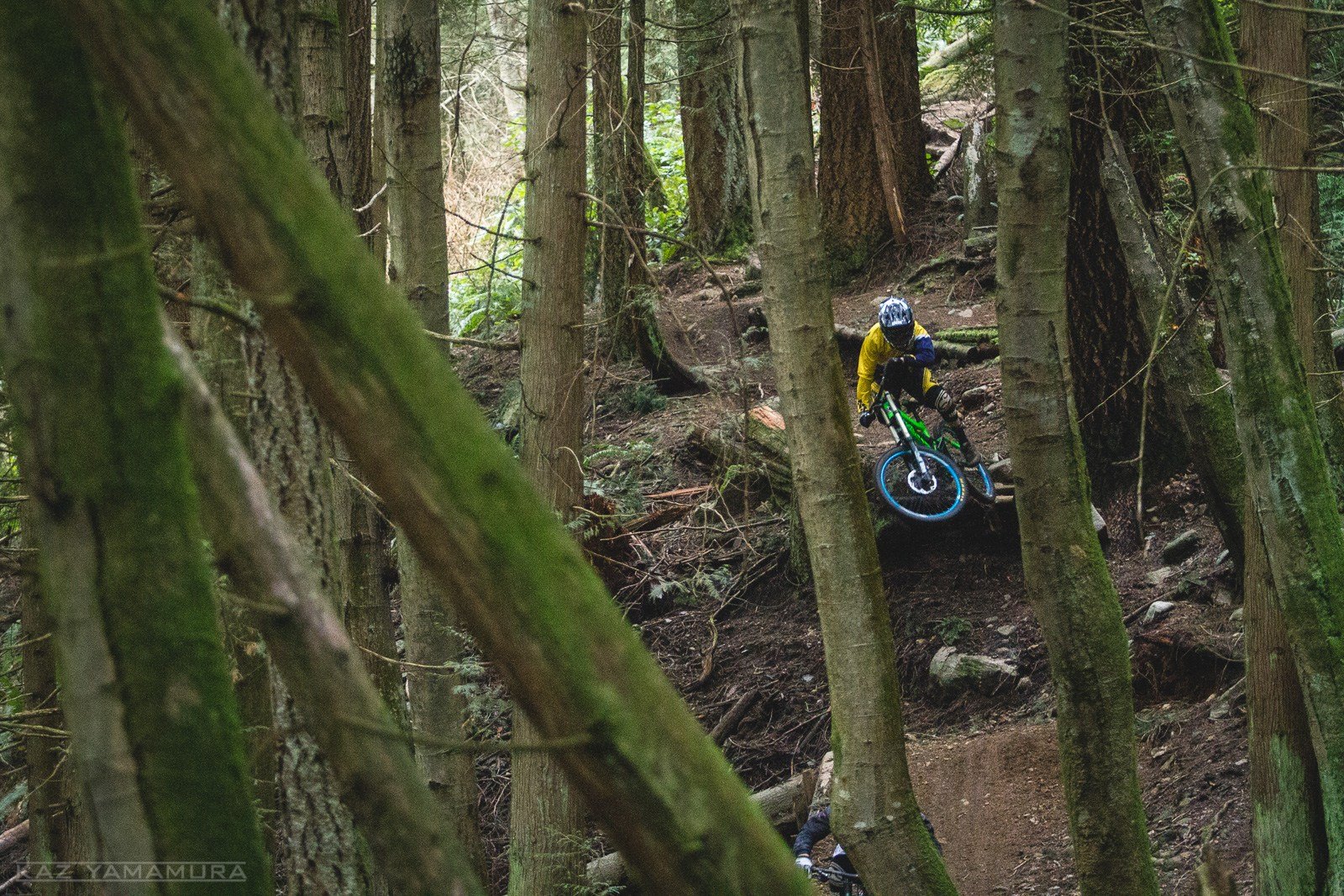
Mark Matthews working the Roach trails on Cypress. Photo - Kaz Yamamura
Did you know the extent of your injuries or did you find out at the hospital? What was the diagnosis?
Geoff Gulevich: "I had an idea of what the injury was but had never heard of a broken patella before... I had a broken patella, a toasted meniscus and a ripped bursa sack."
Jesse Melamed: "I knew I had broken my collarbone, once I settled down enough to decipher my pain."
Mark Matthews: "I saw the X-ray right away and knew how bad it was. My right Femur was a broken mess with multiple fractures right below my hip. The doctor who performed the surgery there estimated I would be off my bike for a whole year, but he was confident I could make a full recovery. My doctor at home was less positive, telling me I would never be able to ride jumps or do gnarly stuff on a mountain bike again. That pissed me off big time. I quickly proved him wrong and I was back riding in 5 months."
Matt Hunter: "I didn't know what was wrong... I was hoping it was dislocated so it could be popped back in and I wouldn't miss much riding. (this is also very funny to me now) What actually happened was that my femur had smashed my tibial plateau. There was bone everywhere and my joint surface would never be the same."
Miranda Miller: "I usually have a good gauge of what is right and what is wrong, perhaps from being broken off so many times. Usually I know it’s broken or whatever and I’m waiting to hear if I need surgery or not etc."
Wade Simmons: "I actually had a terrible initial treatment experience. When I arrived at the hospital it was mid-afternoon and I was getting prepped for surgery when a motor vehicle accident came in and I got bumped off the surgery table (I was in a stable condition, just needing a rod in my leg) because the MVA patient was in a life or death situation. I didn't get out of surgery until after 2 am."
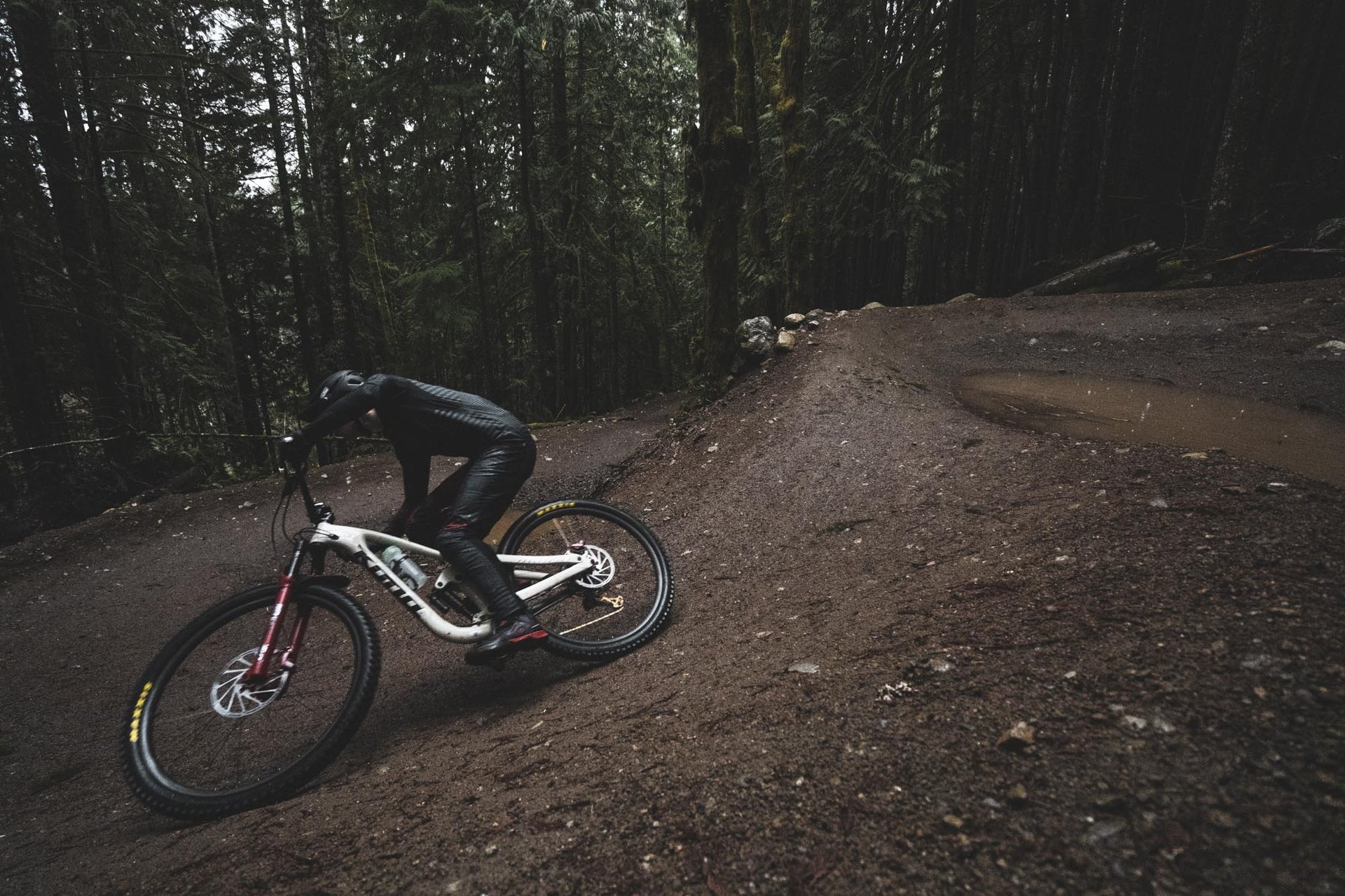
Miranda Miller has changed focus for 2019, swapping sponsors and formats. She'll be racing Kona bikes on the EWS this year. Photo - Paul Kelly
What was initial treatment like?
Geoff Gulevich: "I was given morphine, splinted and shipped back down to North Vancouver to have surgery the next morning."
Jesse Melamed: "Initial treatment was just immobilization until I got home to see if the surgeon recommended surgery. I didn't need it but we opted for surgery as it would give me the best shot at an uncomplicated recovery, which I wanted so I could return to sport with no issues."
Mark Matthews: "The initial treatment in the hospital after surgery was being stuck to a bed for 3 days while doing very basic physiotherapy. When I got home, it was more physiotherapy and whatever exercise I could do on a daily basis. I didn't stick to any one person's recommended treatments. Instead I put 100% of everything into healing as fast as possible."
Matt Hunter: "I got surgery to repair the tibia. I was awake during the surgery because I wanted to know how it was going. It was not going well and the surgeon was getting frustrated so the anaesthetist had to come in and give me some ketamine. That's a whole other story. The surgery went OK in the end. My tibia would give me trouble in the future, but it was not as bad as the doctors said."
Miranda Miller: "Other than the hospital in Duncan where I got my leg casted I have always received very professional treatment. In Scotland I had to have one surgery to relieve the pressure on my nerve as I had lost quite a bit of feeling in my hand. I had an external fixation put in but when arriving home my surgeon recommend it be changed and she personally wouldn’t have done that. It was later re-done and plated to a much more comfortable position with lower risks etc. But I appreciated the honesty and call to action."
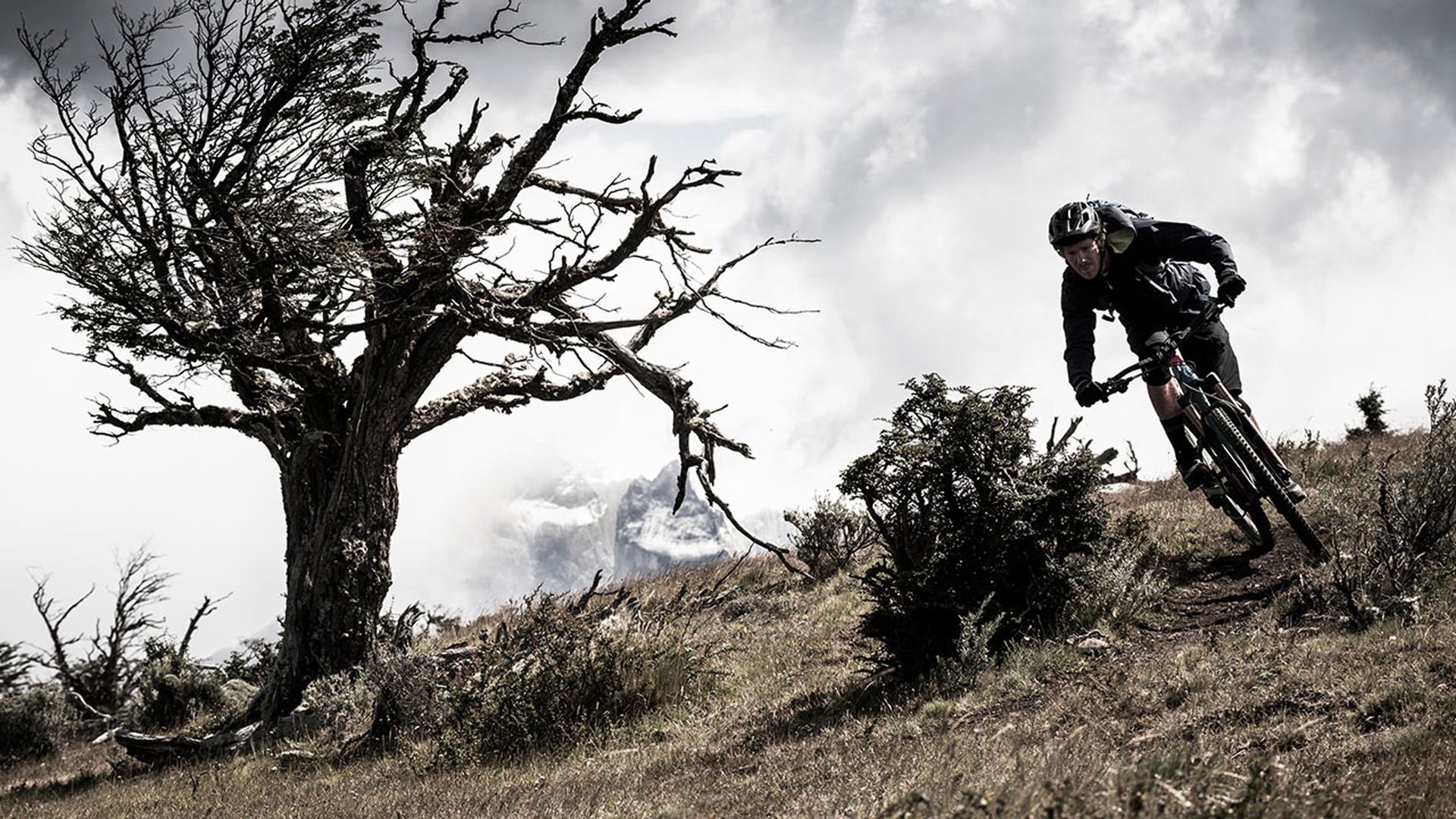
World traveller Matt Hunter in Patagonia.
How soon after initial treatment could you begin any sort of rehabilitation?
Geoff Gulevich: "I was totally out for six weeks before I could begin rehab."
Jesse Melamed: "I was mobile immediately following surgery and could manage day to day stuff. Other than that I gave myself a full 4 weeks of healing before starting any sort of rehab."
Mark Matthews: "Right away. Physio started during week 1 at home. Within less than 3 weeks post-crash, I was going on sit-down road rides ( I couldn't stand being stuck to something stationary) and going to physiotherapy almost everyday. At the 6-week mark, I purchased a wearable ultrasound machine that helped speed up the bone healing process."
Matt Hunter: "It took a long time before I could do anything. I can't really remember, but I think it was 3 months before I could move it very well."
Miranda Miller: "It varies obviously on the injury. For example I have had lots of surgeries and when the bone is plated often you can wear a brace vs a cast etc so you can work on smaller movements sooner. I learned my lesson of riding too soon with the Ulna in 2013 and now I listen more closely to the doctors as well as myself when getting back to rehab.
The PCL was one of the toughest. I had a lot of swelling but I was able to get to rehab right away which gives you hope but it seemed like the slowest to heal. I was able to return to racing fairly quickly but not in the form I would have liked and it was slow to get better. Some bone bruises can take longer than fractures to heal and your risk of then breaking your leg has increased a lot. In fact it still bugs me today."
Wade Simmons: "Unfortunately I had a bit of a complication in surgery and the peroneal nerve was damaged from my knee down causing "drop foot." This meant that I had to wear a brace to keep my foot up. Due to this and my surgical incisions, I couldn't start on any rehab for at least two weeks after. Once rehabilitation started, the main focus was to gain mobility in the knee."
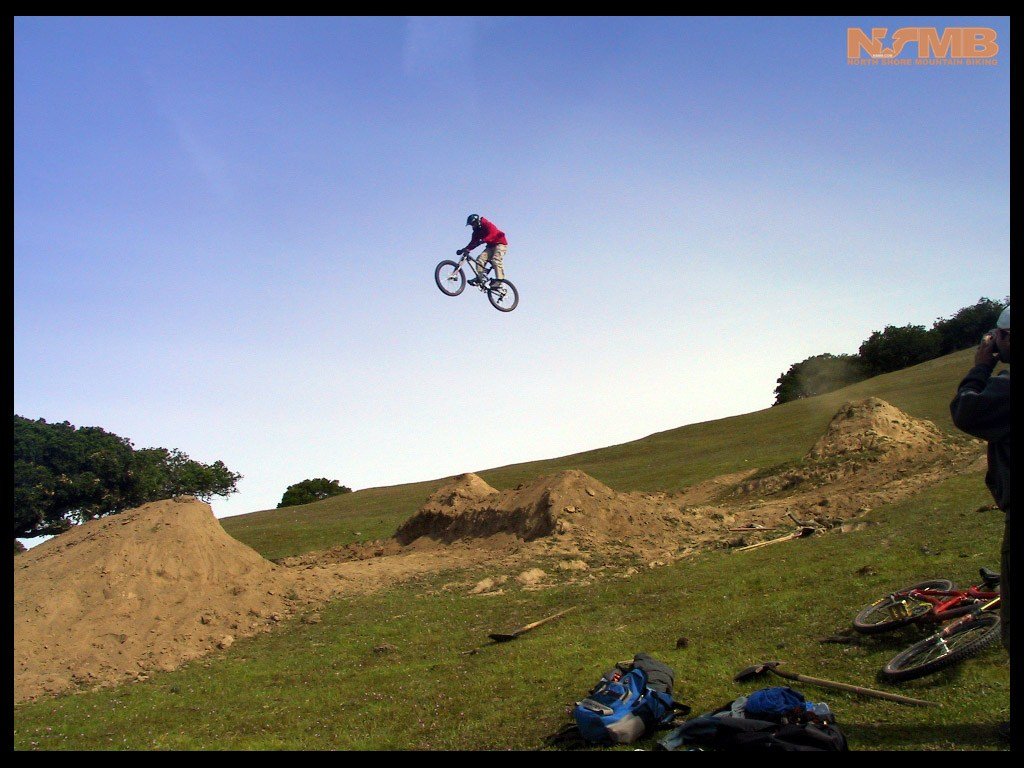
Wade Simmons - Circa 2002 from the archives. Photo - Mark Mayo
What were the most effective therapies?
Jesse Melamed: "There wasn't much I could do, but I was getting acupuncture from my physio and working on keeping the surrounding muscles happy. I was also using a bone healing machine and taking calcium, collagen and bone broth."
Mark Matthews: "A combination of everything was extremely effective. I think diet might have played the biggest role, but it's hard to say. I took natural osteoporosis supplements, cut unnatural sugars out of my diet completely for 6 months, ate only organic fruits and veggies, well-sourced meat, and didn't touch alcohol. On top of this, consistent physiotherapy and daily yoga as soon as I could weight bare played a huge part in recovery as well as surrounding myself with positive, encouraging people who believed I would be back riding soon. "
Matt Hunter: "I did the Physio exercises I was told to. Elastic band resistance stuff. But my leg never really felt much better until I started riding again."
Miranda Miller: "Nutrition. Take supplements and eat a ton of good food. Sleep and eat. Sleep and eat. Limit caffeine and alcohol."
Wade Simmons: "The out-patient physiotherapy seemed adequate, and being on crutches for at least a month after surgery, I remember really enjoying swimming."
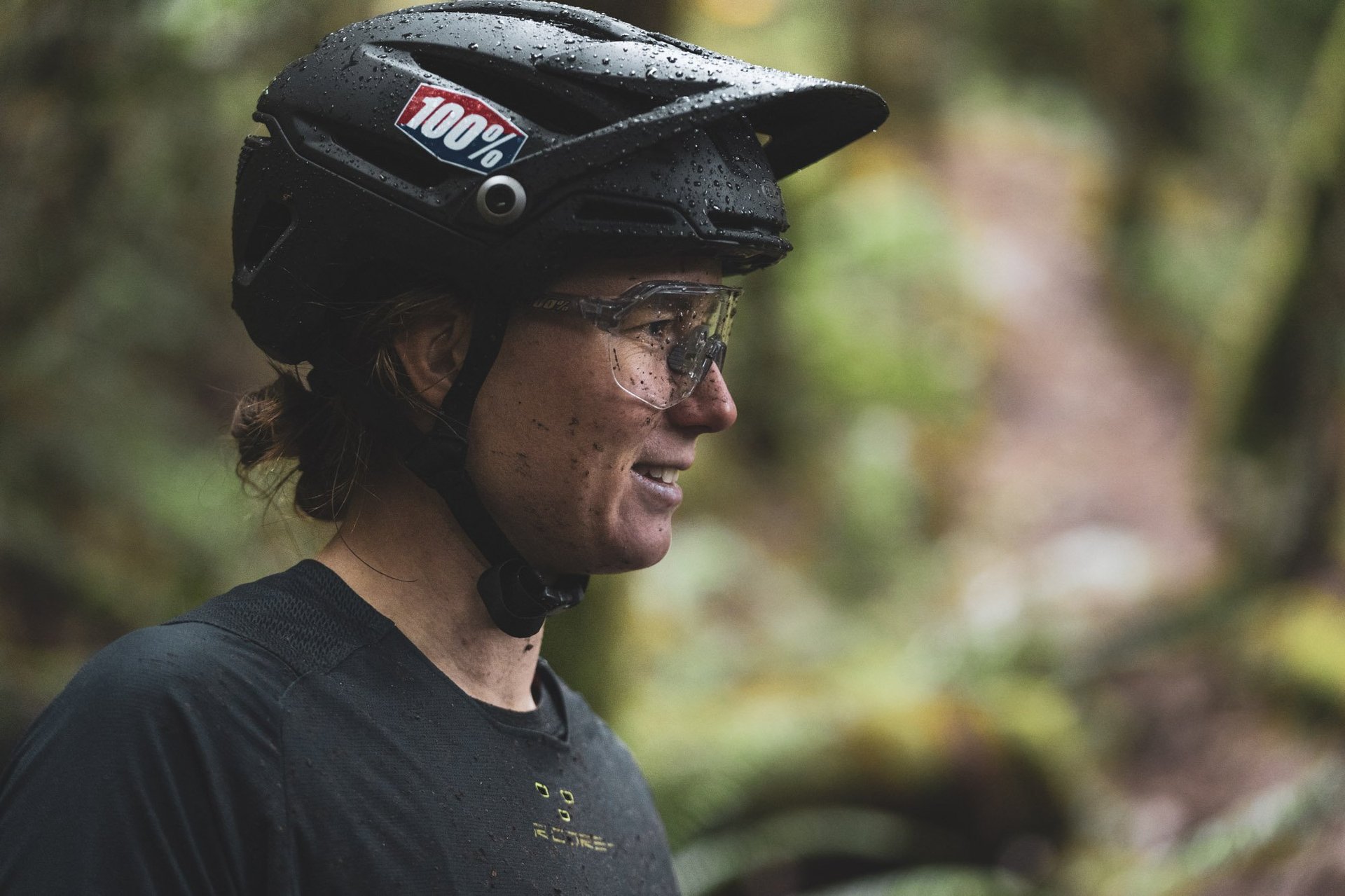
Will Miranda be able to translate her DH skills into success on the EWS? Staying healthy will be key. Photo - Paul Kelly
How was your mental state through the process? Did you notice your mood impacting your progress?
Geoff Gulevich: "I was depressed. It's hard to sit out for so long and watch everyone else progress and just have fun."
Jesse Melamed: "I wasn't too stoked to get surgery as it made the whole thing feel a little more serious. But after a few days of good progress post surgery I was pretty happy with the decision and being able to live a mostly normal life. It was hard to have crashed out of that race and put the next 2 races in question but I tried to keep positive. I can't say I noticed my mood affecting my progress."
Mark Matthews: "The whole experience was a huge challenge, but it made me a much stronger person (both mentally and physically). I did feel down at times, and scared, but I knew that would get me nowhere. So I trained myself to be much more focused than I had ever been in my life. As soon as I could start to see progress, I was generally very happy."
Matt Hunter: "Absolutely. It's difficult to stay focused on healing when you feel like you can't do anything. My friends helped me a lot though. It's important to get out and do stuff that makes you feel normal, even if it's not really helpful for the injury."
Miranda Miller: "I’ve written about this before actually. You go through crazy experiences when you’re injured. There’s this small window when you’re in the ER or whatever getting checked out where you’re strangely optimistic. You’ve sort of put on a brave face and you’re acting like it’s not so bad. Then usually you come home and you try and do something like shower or put your hair up and then it hits you. You have to deal with this shit for at least 6 weeks. Then you begin to wonder (at least me) why it always happens to you? You feel like you’re an idiot for repeatedly getting hurt. You feel like maybe you’re just a shit bike rider and you’re delusional about your talents. Once again you have to tell your sponsors, friends, family etc that you’re out because of injury. It sucks. But nobody likes a Debbie Downer so you just pretend to be okay about it and you just cope until you can start training or riding again. Often that is hard too because you’ve worked very hard for certain strengths etc and when you’re coming back from injury you feel like once again you’re starting at 0. But really, what are you going to do about it? If you want it, you just have to suck it up and get it done. Sometimes things are going to suck. "
Wade Simmons: "It was definitely hard to stay positive and everything was a struggle. My girlfriend (now wife) and I moved back into my parents' house to save money while I recovered, and as expected at 28 years old that presented its own challenges, but I am very thankful that I had that support. Once I could drive, I remember taking day-long jaunts with no real destination just to break up the boredom. When you're used to being outdoors most of the time, sitting around and staring at screens or reading for a couple months straight challenges your character."
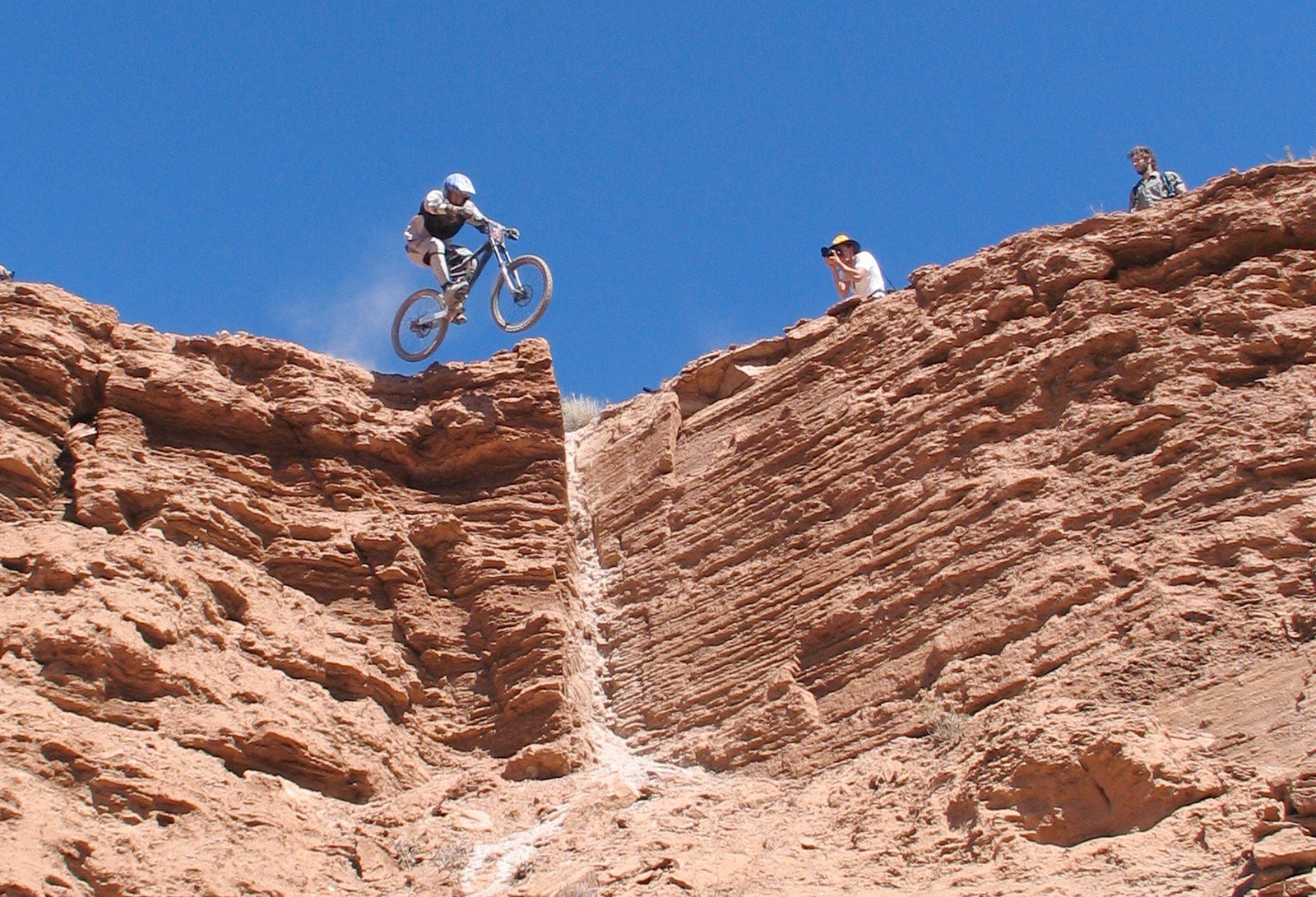
One of Wade's most spectacular crashes (title image) went down at Rampage but he came away unscathed. Photo - Cam McRae
Where there some unexpected challenges during your recovery? Any expenses you hadn't anticipated?
Geoff Gulevich: "I began riding too early and seperated the knee cap again. I was out for a total of 8 months"
Jesse Melamed: "I think collarbone surgery is as good as they get. Being able to move and use my arm in daily use from the beginning helped keep me on track and not have to do much rehab. No expenses."
Mark Matthews: "At the 6-week mark the swelling in my leg was down and I had an awesome range of motion, but it was discovered that parts of the break were non-union. This means the bone can't heal because it's not getting proper blood flow. In my case this happened because when they realigned all the bone there were some big gaps. The ultrasound machine I purchased helped fix this problem. At week 12, things were back on target.
I didn't anticipate my life to be more much expensive initially, but due to the severity of this injury and my inability to work, I quickly drained my bank account. My food budget was out of control but I never felt bad about this. I was spending a lot of money and making none. Most of 2014 was spent trying to get out of debt."
Matt Hunter: "I'm lucky that my sponsors didn't give up on me! Aside from a few physio bills I kept it pretty cheap."
Miranda Miller: "Very often I’ve had injuries that take much longer to heal and that is always hard to deal with. Or for example when I didn’t listen to the doctors and rode too soon after surgery and just had to go through the whole ordeal again a few months later. But you just take those as they come. I have been fortunate that I’ve always had good travel insurance and never had to deal with any crazy financial burdens and I’ve always had my family or boyfriend to help look after me."
Wade Simmons: "The one thing that the accident/injury changed was that it gave me time to focus on other things in my life (things, at that stage in my life, that didn't seem important) like financial decisions etc. I bought my first place while in recovery and looking back at that situation now, it was the best move I ever did. "
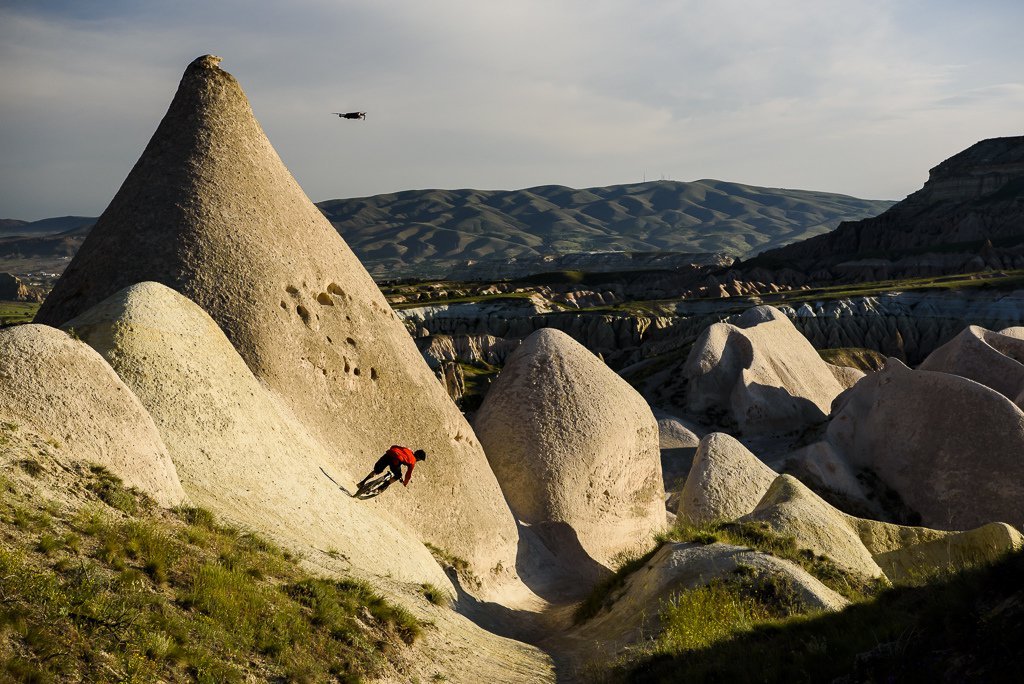
Mark Matthews riding in Cappadocia, Turkey; a spot where insurance would be a solid idea.
When did you get back on the bike? How did it feel those first few rides?
Geoff Gulevich: "I was able to begin to ride eight months after. I was timid and afraid. My drive had been stunted and my confidence was at an all time low."
Jesse Melamed: "I got back on the bike a week before the 4th EWS round, 5.5 weeks post surgery. It felt amazing, I couldn't believe how stable and strong my upper body was. I took it really easy the first day, upped it for the second day, and by the third day I was able to ride at about 80% with no issues. It was scary of course, because the bone was far from healed and if I crashed on it there was a very high chance it would break. But I was confident I could manage and wanted to come back for the next race."
Mark Matthews: "It was unreal! I had more appreciation for riding than ever before! No matter how focussed and positive I was during my recovery, something was still missing inside me. Riding is the ultimate distraction. We all know that feeling during a ride when there is no thinking, only reacting. That is the ultimate therapy. Being on the bike again was the ultimate reward."
Matt Hunter: "I didn't ride again for 6 months, then when I got back on my bike I was so weak. But it comes back fast when you ride all the time. Riding all the time was my real physio program."
Miranda Miller: "To be honest for me the fist rides back are usually shitty, haha. You’ve built it up in your mind as this glorious day but usually you’re slow and kind of uncoordinated and sort of in pain. So it might not be that ripping’ ride I had imagined but I know that they will probably just get better from here on."
Wade Simmons: "It was 6 months before I could ride a bike again, which was longer than expected and very disappointing. The first rides were short blasts around the neighbourhood being careful not to crash on the weak leg, I then headed to the Stanley Park Seawall, that was awesome! It was at least 8 months after my surgery that I finally started to hit the trails, and at a full year, I remember I felt confident enough to start to ride hard again and possibly be able to crash again!"
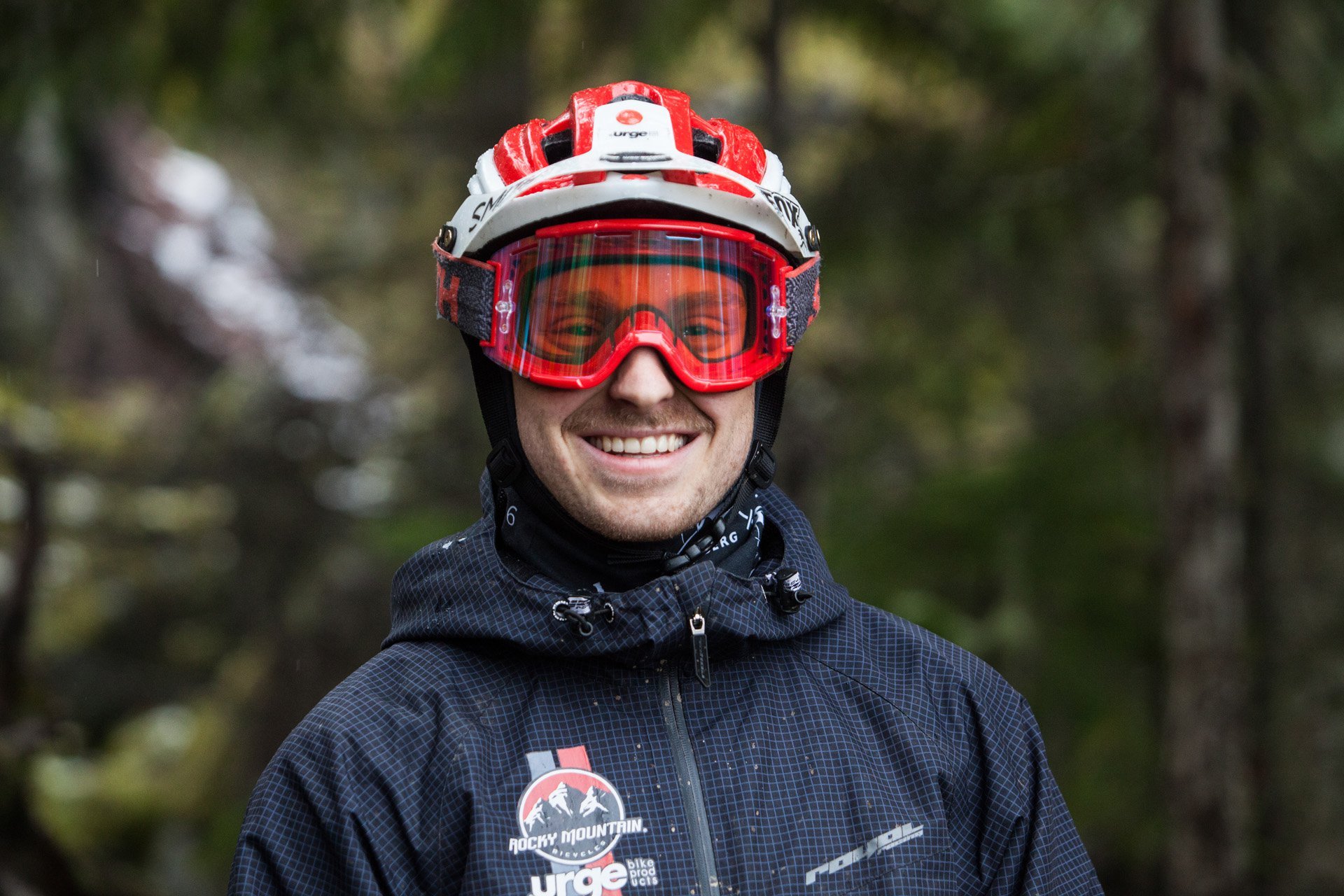
Jeese's smile may be contingent upon staying out of the meat wagon. We'd smile more if he grew back that greasy 'stache. Photo - Ollie Jones/Hailey Elise
Has that injury had a lasting impact on your attitude toward risk?
Jesse Melamed: "It smartened me up a little bit, just to understand what is necessary and say no to things you aren't sure about when the reward is not worth it."
Mark Matthews: "Yes and no. It has made me a more critical thinker in terms of risk, but I still push myself just as hard on the bike. For example, I would never do Rampage again, even if I was guaranteed a winning run as long as I made it to the bottom. The risk-to-reward ratio doesn't make sense. I also rode very conservatively for a year or two after my injury. It took awhile to get all my confidence back. I am as confident and dialled as ever today, but I weigh out the risks more logically now and think more in the long term."
Matt Hunter: "For sure. It made me consider permanent injury as a real likely outcome of big crashes. That can make you think twice about things."
Miranda Miller: "Every injury has had a lasting impact on me. You don’t forget these experiences. Usually the physical pain you forget but the emotional anguish that some of them have caused I will always remember. Perhaps because I have goals and dreams that are very much based on physical performance. My attitude to risk has changed but I try and change with it.
2018 was especially hard for me as I was having problems with one of my wrists. It was swelling up and giving out while riding and it was incredibly challenging to try and race with that in your mind. I had zero confidence coming into big compressions or for a heavy landing at the end of a race run. Over a weekend I wasn’t sure I could handle heavy landings every run so I would ration the amount of times I hit things to make sure I could still hold on by Sunday. I mentally didn’t stand a chance this season. I had some injections to help my ligaments and it improved towards the end of the season but my confidence had already gone."
Wade Simmons: "Absolutely that injury has had a lasting impact on my attitude, I do not want to feel that level of pain again. When I look at things that could possibly repeat an accident like that, I take more time to analyze the outcomes and have become more calculated. I'd say I'm not scared from the accident, but I do possess a new found respect for danger/risk through experience."
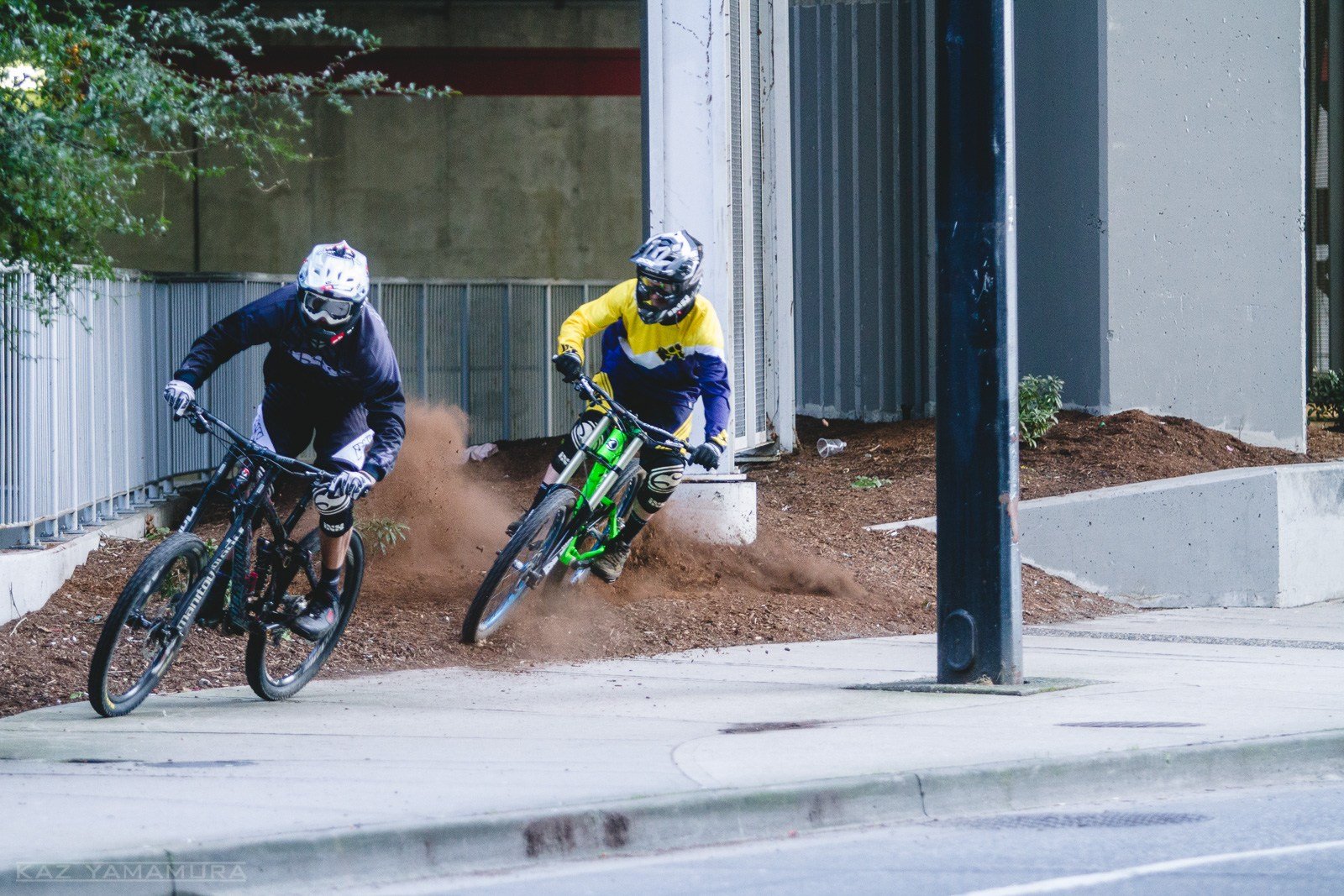
Mark Matthews chasing Gully, both well protected against the bony urban environment. Photo - Kaz Yamamura
Are there things you could have done beforehand that would have helped in some way? (insurance, protective gear, planning - whatever it might be) If so what do you do differently now?
Jesse Melamed: "I had insurance which was nice to know. Nice to know I could accept any treatment and be covered. Protective gear wouldn't have helped so nothing I would do differently there. I will learn from this, I know that I got just a little bit too excited in a section I didn't remember well enough. I have already applied what I learned in the following races and I was able to ride and race consistently. "
Mark Matthews: "If I could do things differently, I would have carefully researched my insurance provider vs. choosing a random company to go with and blindly trust my policy. I told the representative what I needed the coverage for, but the terms and conditions that were not full explained to me. On top of that, the person selling the the insurance was missing information to make sure I had the correct coverage. It turns out the company I went with didn't even offer the type of insurance I needed."
Matt Hunter: "I’ve learned that careful preparation is necessary. My crash could have been avoided. Over the last decade I’ve been able to work with some builders who have taught me that big airs can be a lot safer than you may think. Back in the day, my attitude was just “this is gnar, but I want to do it now” today I would say I’m much more likely to improve a line, then hit it. "
Miranda Miller: "You’re riding down crazy shit on a bike, you’re probably going to get hurt. For downhill, wear armour. At the end of 2016 I did a testing camp after World Championships with the Specialized Gravity Team in Val di Sole. At this point I wasn’t always wearing body armour when I was riding DH and I remember Loic (Bruni) calling me out pretty hard about it. He said, “what it doesn’t hurt when you crash?” I was like touché and now I wear body armour every time I’m on my dh bike. It was true. It hurts when you hit the ground. So if you can ride without being limited, put on the armour. If you travel without insurance you’re insane. I use BCAA and they have great coverage for Professional Athletes."
Wade Simmons: In the situation with my crash, I think it was simply rider error; I got a bit bucked off the lip and landed nose heavy...nothing I could have done to prevent what happened. The truth of the matter is that, when we hit jumps like the one that I broke my leg on, you really don't have an opportunity to practise those, the rider is banking on skill, experience and a little luck....I just didn't have the luck that day.
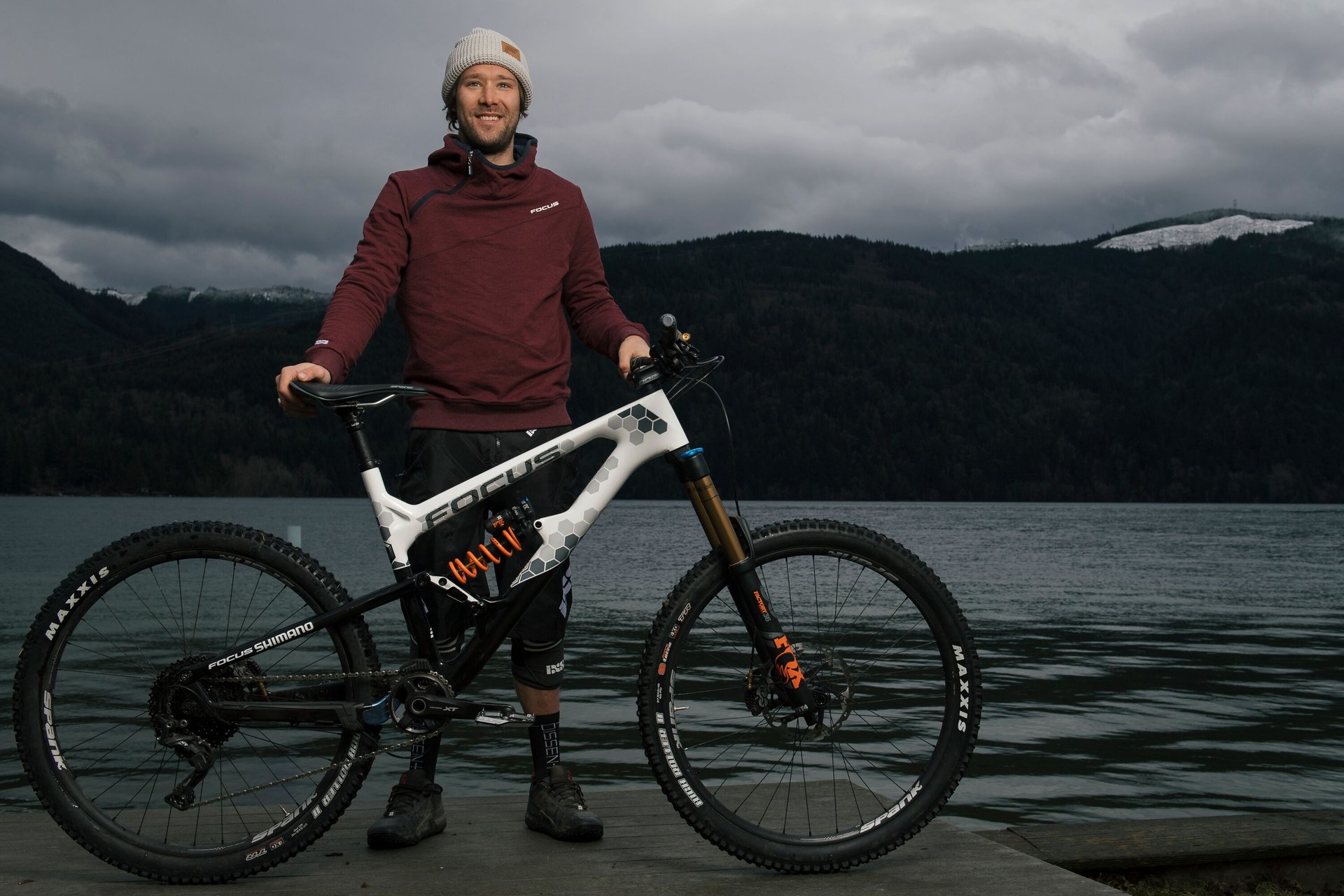
It's hard to imagine an injury that would spoil Gully's mood. Photo - Paris Gore
What advice would you give riders recovering from a serious injury?
Geoff Gulevich: "Stay positive. Stay as active as you can. Blood flow is as good for my positive energy and recovery as anything is. Hang around positive people. Get out of the house. Being locked down is bad for your spirits."
Jesse Melamed: "Give yourself proper time to heal. Everyone goes at a different pace but it's important to let your body heal. I know I was back on my bike quick but for those first 5 weeks I did absolutely nothing to stress my injury nor my body. I took care of my body, ate healthy, got plenty of sleep, and just focused on giving my body time to do its thing. "
Mark Matthews: "Have focus and discipline and only concern yourself with what you have control of. You're in it for the long haul so prepare for it and plan out what you need to do. You can only do so much at once. In order to stay positive, cut negative forces out of your life and surrounded yourself with positive, supportive people who believe in you. Having a strong support system is huge."
Matt Hunter: "I often hear people complain that it's been 2 or 3 months and it's still not better... I feel like 6 months to a year is a more realistic time frame to be back riding 100%."
Miranda Miller: "You might not be the same again, even if it’s small you will probably change but that isn’t a bad thing. You will get stronger in one way or another and learn things about yourself. That’s living right there."
Wade Simmons: "Realize that it's an accident and don't blame yourself. These things happen and we can't conquer all we want....sometimes nature wins, and that's fine with me. We take alot. I enjoy the perspective I have now going through this accident and recovery, I don't know if I could say that I wish it didn't happen, but I can definitely say I don't want it to happen again!"
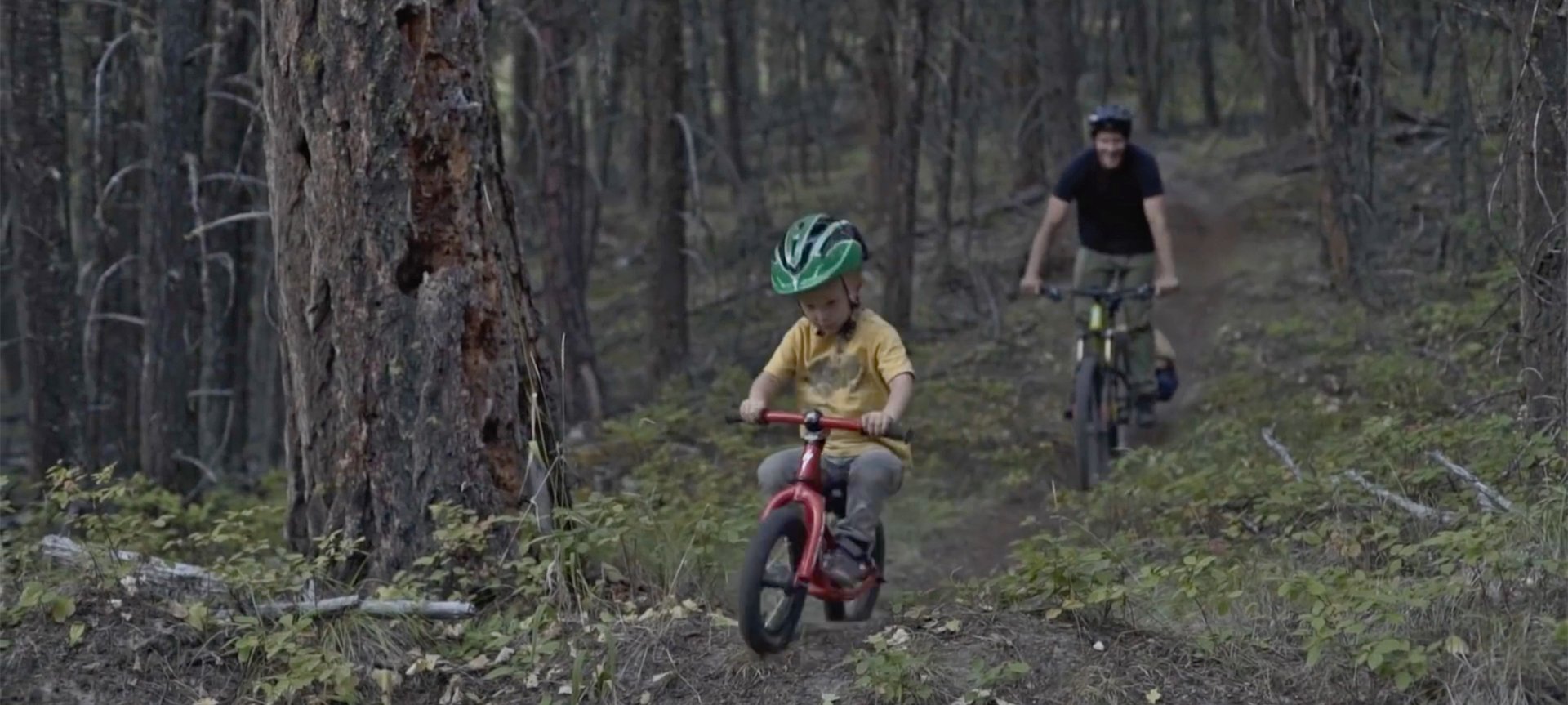
These days Matt Hunter has some extra incentive to stay healthy.
Last words to Matt Hunter
Matt Hunter: "Sometimes I think that the risk is what makes you feel so alive. I can't imagine what it would be like if riding was like a video game, and you could crash and get up without consequence. Although I hate the injuries, they are a part of it."






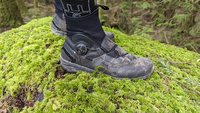
Comments
Tremeer023
5 years, 2 months ago
I ruptured my spleen and needed an emergency splenectomy about 6 years ago. The surgeon gave me about 30 mins to live before I would bleed out at one point. Was sessioning a large table jump and tried to whip the opposite way but didn't get the rear end around.
Since then I've had 2 children and, whilst I still love riding, it has changed my perspective on injury massively. I'm nowhere near as reckless as my younger days and actually appreciate the time on the bike more as a result.
Reply
Cam McRae
5 years, 2 months ago
The Doc told you that? WTF? Or was he speaking hypothetically?
Reply
Tremeer023
5 years, 2 months ago
Got to A and E and had a CT scan to diagnose.
Had to sign a form before going under the knife, and it was mentioned by the surgeon whilst he was explaining my predicament and the need for the procedure.
He effectively saved my life though so it's all good. :-)
Reply
Morgan Heater
5 years, 2 months ago
Oh man, those injuries were brutal! I can barely sit still for a day, much less 6 months.
Reply
Mammal
5 years, 2 months ago
Fantastic read. Thanks for this series, Cam.
Reply
AndrewR
5 years, 2 months ago
Remember that good insurance is worth the price. These guys developed a policy by mountain bikers (extreme sports) for mountain bikers: https://www.yourfinancialtree.ca/travel
Reply
BicycleBroker
5 years, 2 months ago
There's "amateur" coverage for the majority of riders. Only bike related exclusion here is remunerated professional riding of any sort.
If you go with PRO coverage, the only mountain bike requirement is adding the "Adventure Sports" coverage. "Extreme is for other activities that the insurance industry deems uber risky.
Happy trails!
Reply
Please log in to leave a comment.